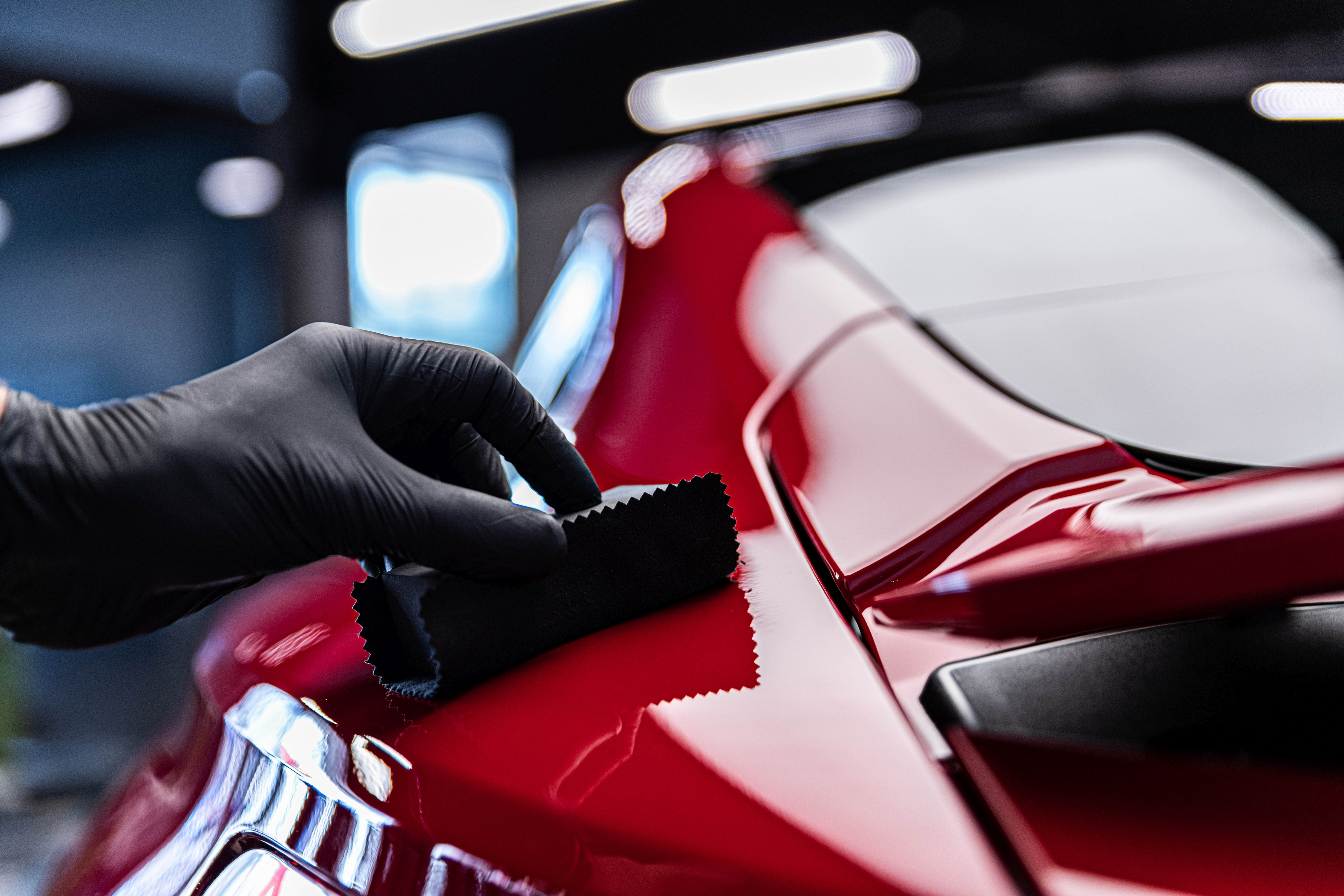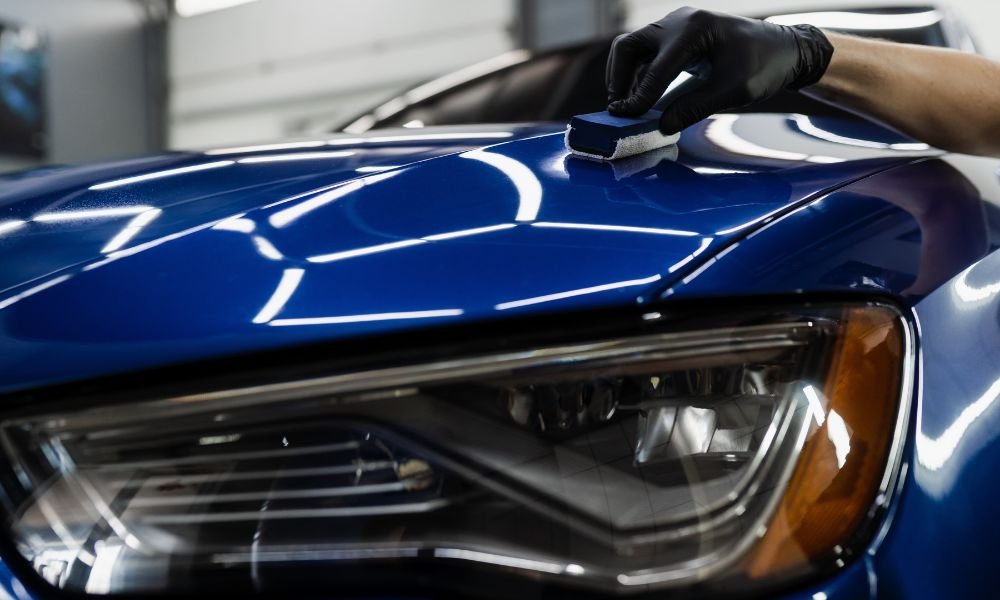Invest in Your Automobile's Future with Blessed Touches Detailing Ceramic Coating
Wiki Article
Why Ceramic Coating Is a Game-Changer for Auto Care Enthusiasts
Ceramic finish has become a critical improvement in the world of auto care, using an ingenious solution that dramatically boosts lorry defense and aesthetic appeals. By chemically bonding with the paint surface area, this technology not only gives an awesome obstacle against environmental impurities but additionally simplifies upkeep routines. The hydrophobic residential or commercial properties intrinsic in ceramic finishings help in driving away water and dirt, while their resistance to scrapes and UV damages assurances to maintain a car's worth gradually. The implications of this technology prolong past simple defense-- what does this mean for the future of car treatment?Advantages of Ceramic Coating
In the world of vehicle treatment, the benefits of ceramic coating are increasingly recognized for their ability to enhance the durability and appearance of automobile outsides. This cutting-edge innovation gives a sturdy layer of protection against environmental hazards, consisting of UV rays, dirt, and chemical impurities. By developing a solid bond with the automobile's paint, ceramic finishes create a hydrophobic surface that drives away water and grime, making maintenance substantially simpler.Among the standout benefits of ceramic coating is its capability to maintain the visual appeal of an automobile. Unlike traditional wax or sealants, which require regular reapplication, ceramic finishes can last for a number of years. This long-lasting security not just keeps the car's luster however also prevents oxidation and fading, thus prolonging the life of the paintwork.
Furthermore, ceramic finishings are immune to scrapes and swirl marks, supplying an added layer of defense versus small abrasions. This longevity not just boosts the aesthetic allure yet also increases the resale value of the car. Ultimately, the application of ceramic coating represents a strategic investment in both the maintenance and longevity of a car, making it an essential consideration for vehicle treatment lovers.
Just How Ceramic Finishing Works
Ceramic finishes run with an advanced chemical process that involves bonding with the vehicle's factory paint. Upon get in touch with, the finishing goes through a curing reaction, developing a covalent bond with the paint molecules.As soon as cured, the ceramic coating creates a hydrophobic surface area, substantially reducing water and dirt adhesion. This particular permits less complicated cleansing and assists maintain the automobile's appearance over time. Furthermore, the covering offers an efficient obstacle against harmful environmental pollutants, such as UV rays, bird droppings, and tree sap, which can damage the paint.

Application Process Described
The application procedure of ceramic finishing normally involves numerous important steps to make sure optimum bond and efficiency. The automobile's surface have to be extensively cleaned up and sanitized. This includes washing, claying, and potentially brightening the paint to get rid of any flaws, such as scratches or swirls, that might disrupt the finishing's bond.
Maintenance Tips for Long Life
Correct maintenance is important to take full advantage of the durability and performance of ceramic coverings on vehicles. Routine treatment will certainly not just maintain the covering's hydrophobic residential or commercial properties but additionally enhance the overall look of your automobile.To start with, wash your vehicle frequently making use of a pH-neutral hair shampoo specifically created for ceramic-coated surface areas. Prevent automatic vehicle washes with rough brushes, as they can scrape the finishing. Instead, utilize the two-bucket method to decrease contamination during image source hand washing.

In addition, bear in mind environmental factors. Park in shaded areas or use an auto cover to safeguard the layer from extended direct exposure to sunlight, which can deteriorate its performance with time.
Last but not least, avoid the usage of unpleasant cleaning tools or extreme chemicals, as these can endanger the integrity of the finishing. By sticking to these maintenance tips, auto care fanatics can ensure their ceramic layers continue to be effective and visually appealing for years to come.
Contrasting Ceramic Coating Options
When choosing a ceramic finishing for your car, numerous options are readily available, each varying in durability, solution, and application methods. The most usual types include consumer-grade and professional-grade layers. Consumer-grade layers are usually simpler to apply and can be bought for do it yourself tasks. They provide good defense yet may call for even more constant reapplication, commonly within 6 months to a year.Professional-grade layers, on the other hand, are designed for longer-lasting security and are generally applied by certified technicians. These layers can last as much as five years or more, supplying exceptional resistance to chemicals, UV rays, and ecological contaminants. They also often include improved hydrophobic residential properties, making it much easier to clean the car and maintain its appearance.
Furthermore, some ceramic layers incorporate advanced technologies, such as self-healing properties or added thickness for much better influence resistance. When comparing alternatives, take into consideration aspects such as your spending plan, preferred longevity, and whether you like a do it yourself approach or expert setup. Ultimately, picking the appropriate ceramic coating involves stabilizing your car's particular demands with the level of defense and maintenance you are ready to devote to.
Conclusion
In final thought, ceramic finish represents a significant innovation in vehicle treatment, providing countless advantages such as enhanced protection, convenience of upkeep, and boosted visual appeal. Eventually, ceramic layer raises the standard of car security and treatment.Ceramic covering has arised as a critical development in the realm of auto treatment, providing a cutting-edge service that dramatically enhances automobile protection and looks.In the world of auto care, the benefits of ceramic finish are significantly acknowledged for their capacity to enhance the long life and look of automobile outsides. Ultimately, the application of ceramic finish stands for a critical investment in both the upkeep and durability of a vehicle, making it a necessary factor to consider for vehicle care enthusiasts.
The science look at these guys behind ceramic coverings not only my sources improves the aesthetic allure of cars however additionally prolongs their life-span, making them invaluable for cars and truck treatment enthusiasts.
Inevitably, ceramic coating raises the requirement of lorry defense and treatment. (Blessed Touches Detailing Ceramic Coating)
Report this wiki page